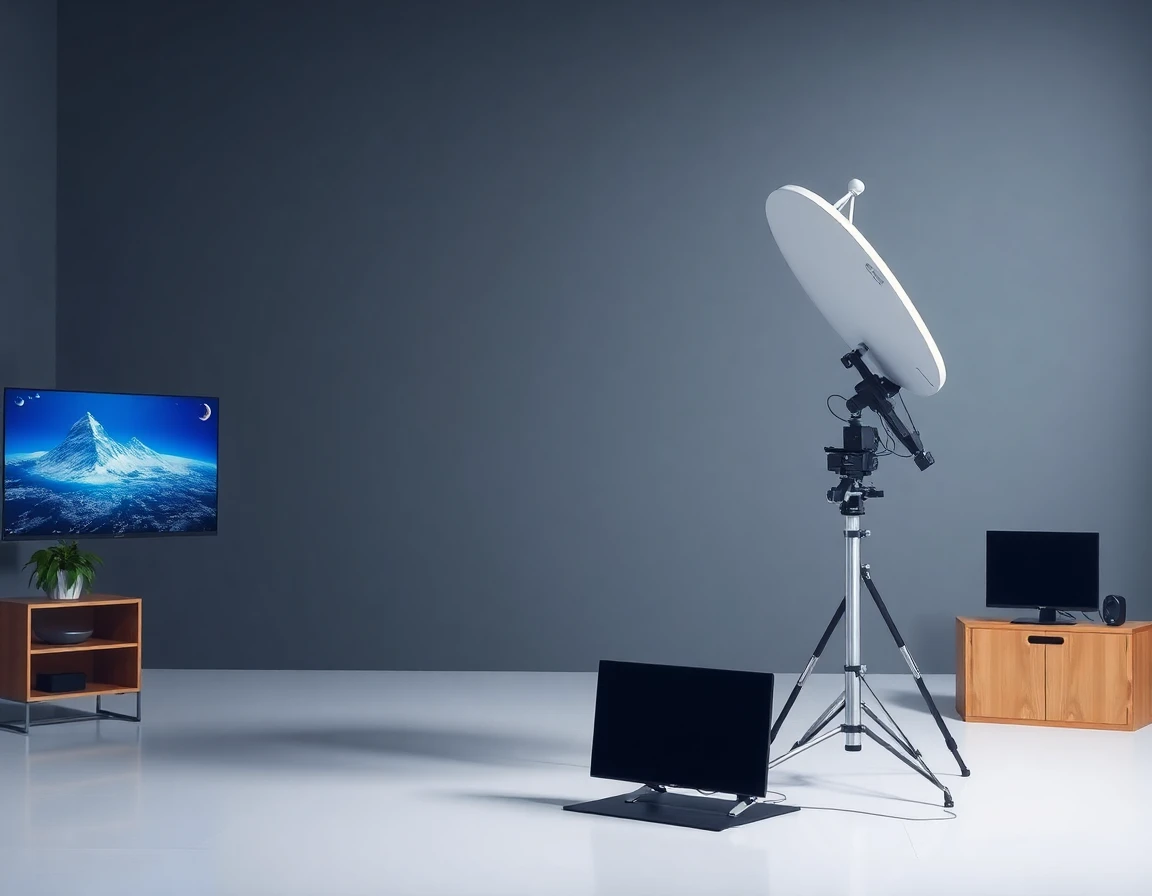Recent developments in the aerospace and defense sectors have ushered in significant advancements in satellite technology. From robust satellite constellations to pioneering communication systems, the landscape of satellite deployment and functionality is rapidly evolving.
SpaceX’s Milestone Achievements in Satellite Launches
On September 5, 2025, SpaceX celebrated a remarkable achievement by successfully recovering its 500th Falcon 9 booster. This milestone not only underscores the company’s leadership in rocket reusability but also highlights how such innovations have enabled a rapid launch cadence. The Falcon 9 booster in question completed its 27th flight, nearing its refurbishment limits, a testament to the durability of SpaceX’s engineering.
During this milestone mission, SpaceX launched 28 Starlink satellites, increasing its orbiting constellation to over 8,000 satellites, with a long-term goal of around 12,000 to ensure global broadband connectivity. In 2025, SpaceX has achieved an unprecedented operational tempo, averaging more than one launch per day. This aggressive schedule is set to continue, with the upcoming launch of the Nusantara Lima communications satellite for Indonesia scheduled for September 9, 2025, from Cape Canaveral, further expanding the reach of regional satellite communications.
AeroVironment’s Revolutionary Laser Communications
On September 8, 2025, AeroVironment (AV), a prominent U.S. defense technology firm, announced a $240 million contract to provide long-haul laser communications terminals. Designed for deployment in orbit, these terminals will facilitate high-bandwidth and secure space-to-space satellite crosslinks across multiple orbits. This advanced technology is poised to overcome existing challenges related to jitter, extreme temperatures, and vacuum conditions, thus enhancing data transfer rates and distances between satellites.
AeroVironment showcased its manufacturing readiness earlier in 2025 following successful multi-orbit laser communication tests. This innovation represents a significant leap forward in satellite communications infrastructure, allowing for more efficient data handling critical for modern defense and commercial operations.
IHI and SatVu: A Collaboration for Thermal Infrared Capabilities
On September 10, 2025, Japan’s IHI Corporation and the UK-based SatVu entered a Memorandum of Understanding (MoU) to develop a high-resolution thermal infrared (IR) satellite constellation. This collaboration aims to bolster Japan’s sovereign capabilities in national security, intelligence, surveillance, reconnaissance (ISR), and economic monitoring.
SatVu, recognized for its HotSat-1 thermal IR satellite launched in 2023, is poised to expand its constellation with HotSat-2 and HotSat-3 by 2026. The new satellites will enhance capabilities in emissions tracking and disaster response, showcasing the growing international collaboration in space-based sensing technologies.
The Future of Satellite Communications and Earth Observation
The rapid advancements in satellite technology are transforming the aerospace landscape, with implications for both defense and commercial sectors. SpaceX’s successful launch cadence and the integration of precision accelerometers and quartz MEMS gyroscopes in navigation systems are driving down costs and increasing access to space. These innovations facilitate the deployment of extensive satellite networks capable of delivering high-speed internet and real-time data across the globe.
Moreover, the emergence of laser communication terminals from AeroVironment addresses the increasing demand for high-data-rate satellite networks. This technology is crucial for maintaining bandwidth efficiency and minimizing latency in communications, particularly for military operations and emergency response scenarios.
In addition to communications, the collaboration between IHI and SatVu on thermal infrared satellite constellations highlights a significant shift toward enhanced Earth observation capabilities. As countries increasingly rely on satellites for environmental monitoring and national security, the demand for sophisticated thermal data utilization rises, further solidifying the role of international partnerships in advancing satellite technology.
Conclusion
The recent developments in satellite technology signify a dynamic period in the aerospace and defense industries. With SpaceX’s reusability innovations, AeroVironment’s laser communications, and collaborative efforts in thermal infrared systems, the future of satellite deployment looks promising. As these technologies continue to evolve, they will play a crucial role in enhancing global connectivity and addressing pressing challenges in national security and environmental monitoring. The ongoing investment and innovation in satellite technology not only reflect but also shape the future landscape of aerospace and defense.
References
-
September 2025 - Spaceflight Now (spaceflightnow.com) - 9/8/2025 Month: September 2025 · Live coverage: SpaceX to launch Indonesian communications satellite from Cape Canaveral · SpaceX passes 2,000 Starlink …
-
AeroVironment Wins $240M Laser Communications Terminal Order (www.satellitetoday.com) - 9/8/2025 AeroVironment (AV) won a contract worth around $240 million for its long-haul laser communications terminals from an unnamed space customer.
-
IHI agrees collaboration with SatVu on Thermal Infrared (IR) Satellite … (www.ihi.co.jp) - 9/8/2025 A signing ceremony for the Memorandum of Understanding (MoU) between IHI and SatVu will be held on September 10, 2025, during the “DSEI UK” …
-
SpaceX Soars, Google Pays Billions, and More: Tech Bombshells of … (ts2.tech) - 9/6/2025 SpaceX Soars, Google Pays Billions, and More: Tech Bombshells of Sept 5–6, 2025 - TS2 Space.
-
News Archive | September 2025 - Space (www.space.com) - 3/10/2025 September 8 · Spacecraft launcher named for robot in ‘Interstellar’ could help us reach another star system. · September 7 · See the blood moon rise in 1st …



